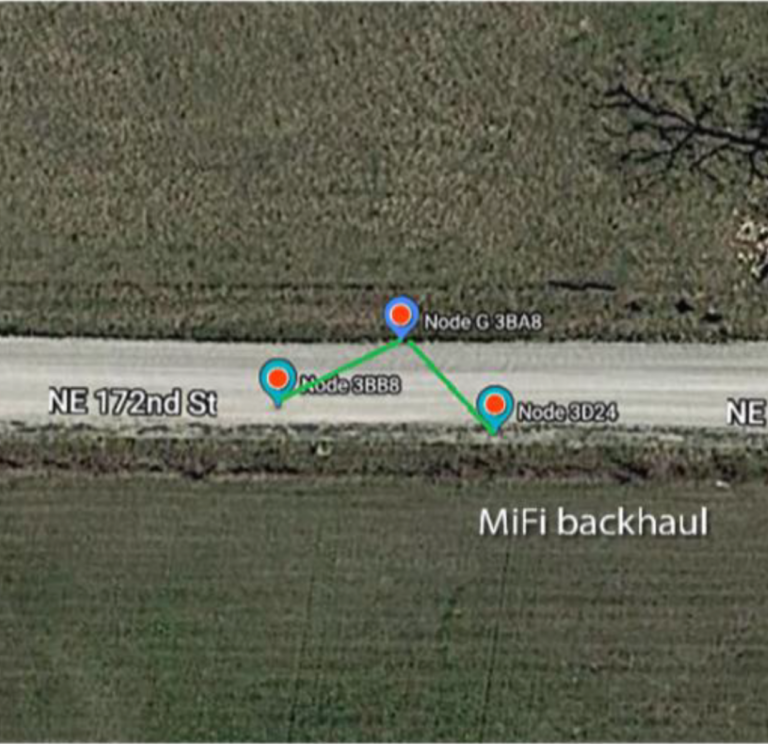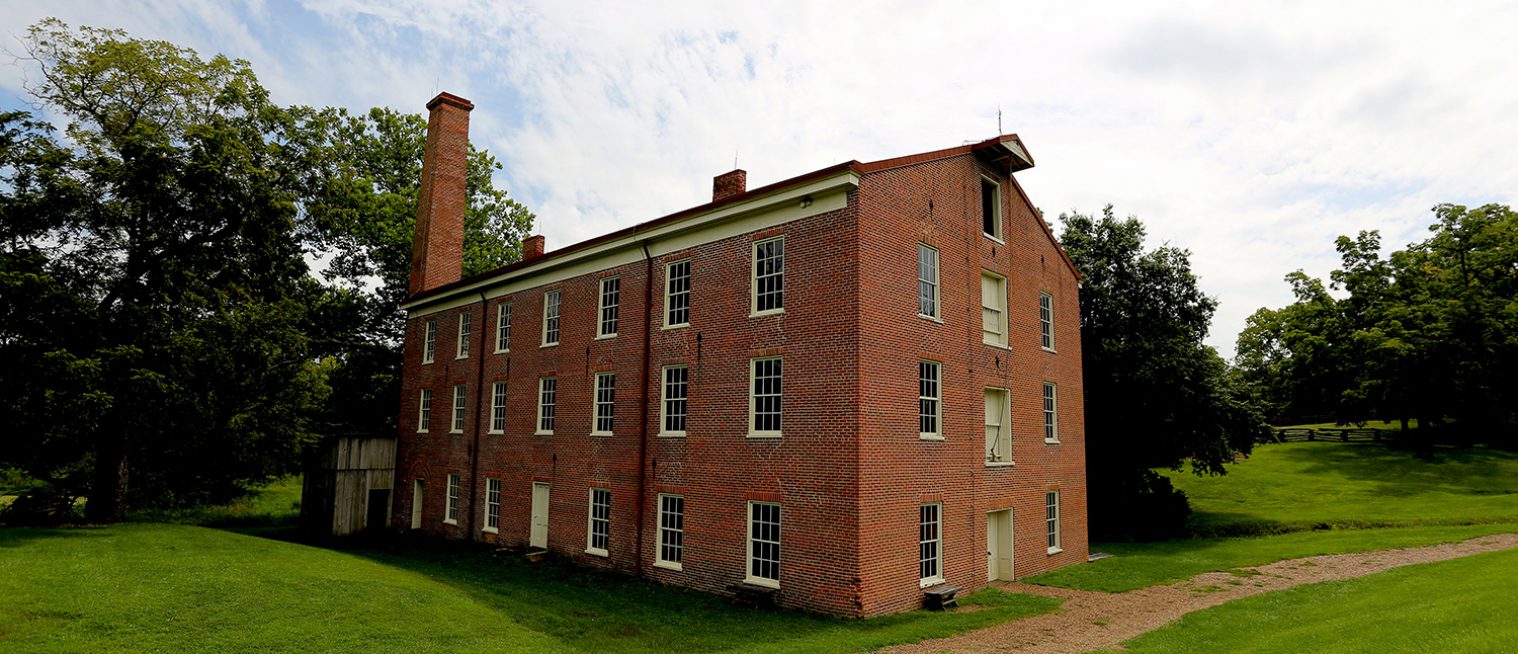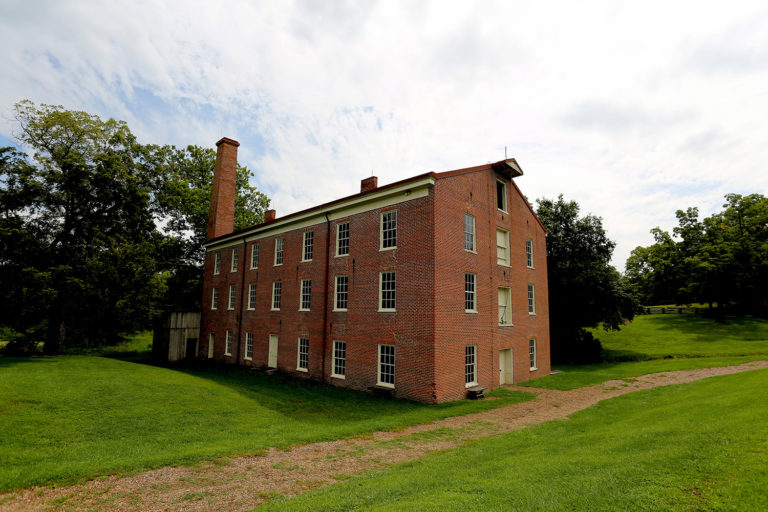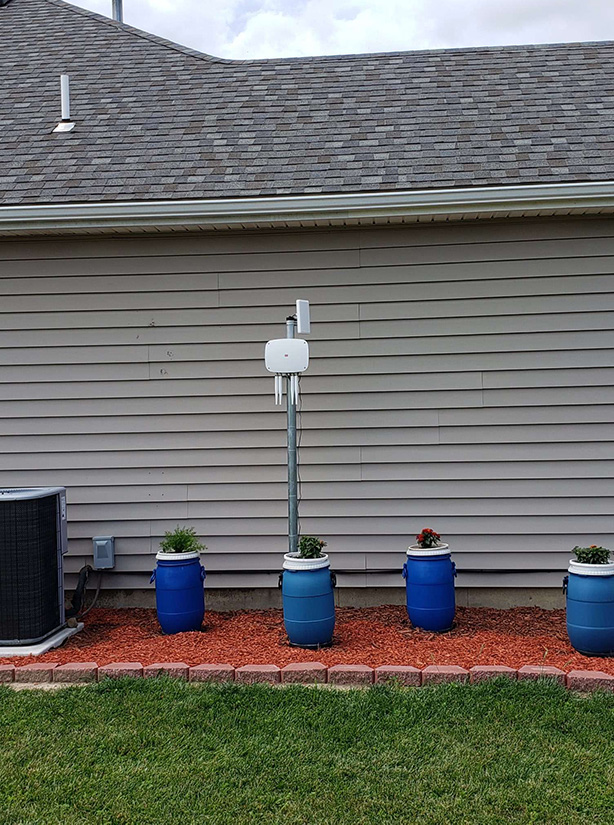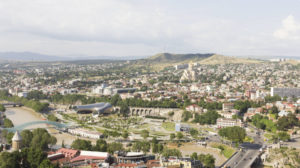Purpose
The day’s event at the local test site was to demonstrate the key feature innovations of ARRA’s Industrial mesh technology in a scaled, real world environment for a 3rd party industry rep.
Feature
Auto configure install Forgiving RF behavior Self-healing mesh High capacity Scalability Seamless multi-homing
Demonstration
- Nodes operational within 100 seconds after power-on
- Easy, stable connections demonstrated in unfavorable conditions
- Network traffic automatically re-routed around downed nodes
- 314Mbps across a monthly line of site half-mile link through trees
- 18 nodes under load with no signs of overhead stress
- Backhaul auto-switched to better backhaul once available
Summary
The site receives wireless backhaul from 2.53 miles away on a 5GHz link which feeds the ARRA mesh deployment. A total of 18 ARRA routers were setup and allowed to establish and maintain connection with one another. The process takes less than 2 minutes for each router once they’re powered on. No configuration is necessary other than antenna alignment. Staff was present at each node to observe connectivity and temporarily shut down units to simulate outages in order to demonstrate the self-healing behavior of the technology.
A total of 18 routers were used in this test. There are fixed permanent nodes as well as temporary nodes used to provide special challenges to the demonstration. Photo examples of the node installations at the site are below.
Deployment flexibility
Self-managing mesh technology allows you to deploy paths around obstacles such as hills or trees without costly tower infrastructure. Multiple paths for fault-tolerant lines are inexpensive and easy to install. The routers will always re-route as necessary to maintain optimal connectivity.
No management is required. Here below is a topography diagram showing the Watkins Mill test site. The long leg in the map (the red line) is unable to make a connection because of a hill blocking the signal (see detail below).
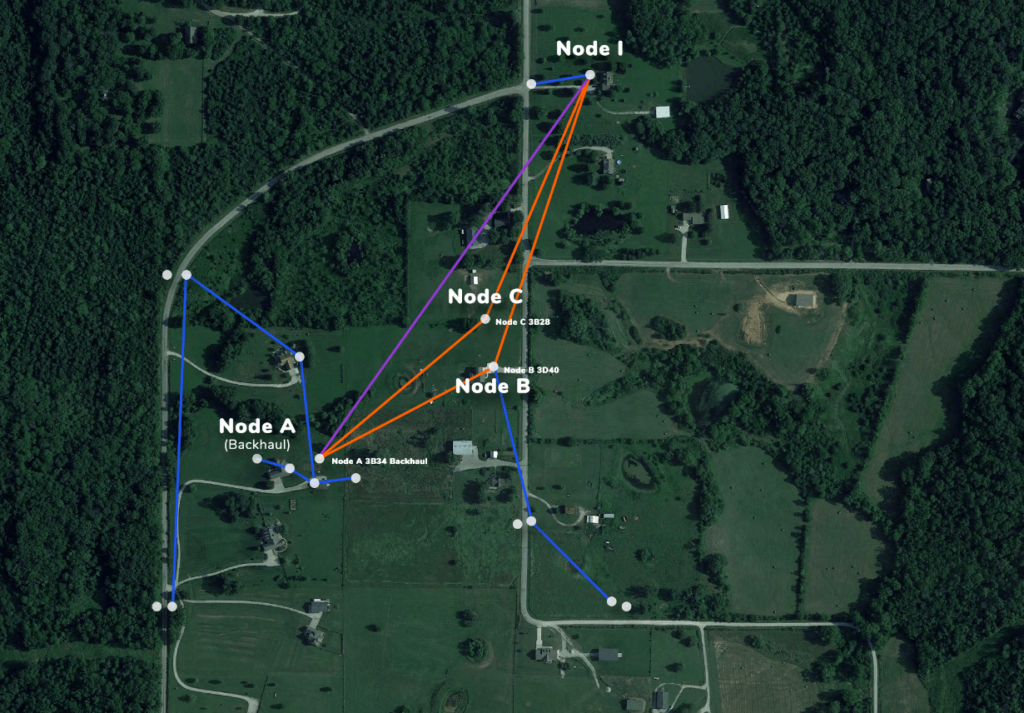
An unwelcome hill blocked the most direct path for the signal.

However, using the convenience of mesh we easily overcome the problem by adding a node And saving the money that would normally be spent building a tower to solve the problem.
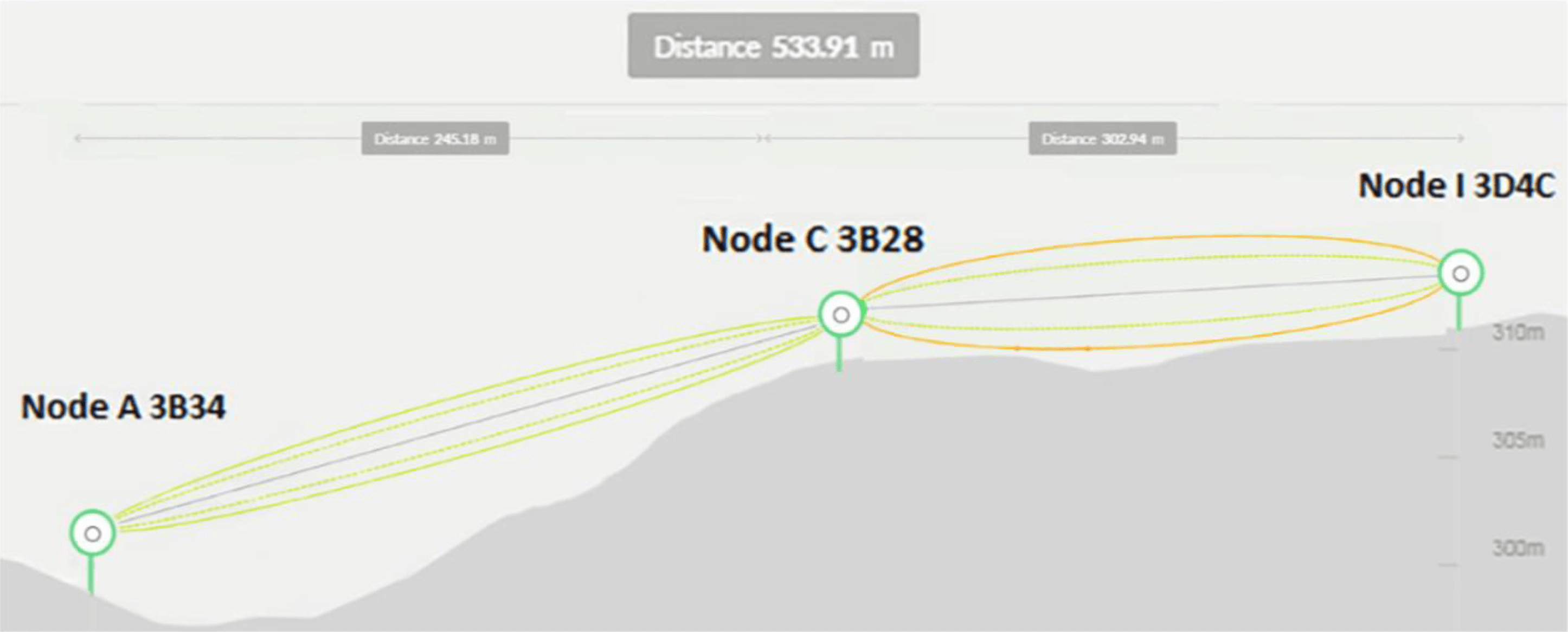
Additional redundancy was then achieved with an additional node (Node B) which was added for demonstration of mesh healing. Node I could then connect to backhaul through either B or C.
Self-healing demonstration
To demonstrate self-healing, three routers were singled out for observation while one node was downed in order to simulate a network connectivity failure. ARRA’s self-healing technology identified the problem and automatically re-configures the network to restore optimal efficiency via alternative routes. No management or user intervention is required. It’s all automatic.
This process takes less than two minutes to complete. The healing behavior is reliable and able to manage itself while completely disconnected from any larger network connection. ARRA’s Industrial mesh routers are fully decentralized & autonomous.
Node I was the endpoint of interest. Node B and C were the node hops and Node A was the backhaul connection of record. The figure below shows the node locations. Please note other nodes in the mesh deployment are shown in separate link colors for visual simplicity.

Self-healing mesh graph logs
Here you can see the progression of mesh relationships through the process of powering down a node and the subsequent self healing reaction. Re-routing to optimal configuration without the need of the downed node takes less than two minutes.
1st Graph From (Node I) around 2:15PM
2nd Graph 4:05PM recofiguring for diamond pattern for demo with Node B and Node C
3rd Graph 4:15PM Node B and Node C are on
4th Graph 4:20PM Node B 3d40 is turned off
5th Graph 4:26PM Node C 3b28 is off; and Node B 3d40 on
As the graphs show, the decentralized Industrial mesh protocol cooperated with it’s peers to re-route traffic and restore optimal packet transit for all remaining nodes.
1st Graph
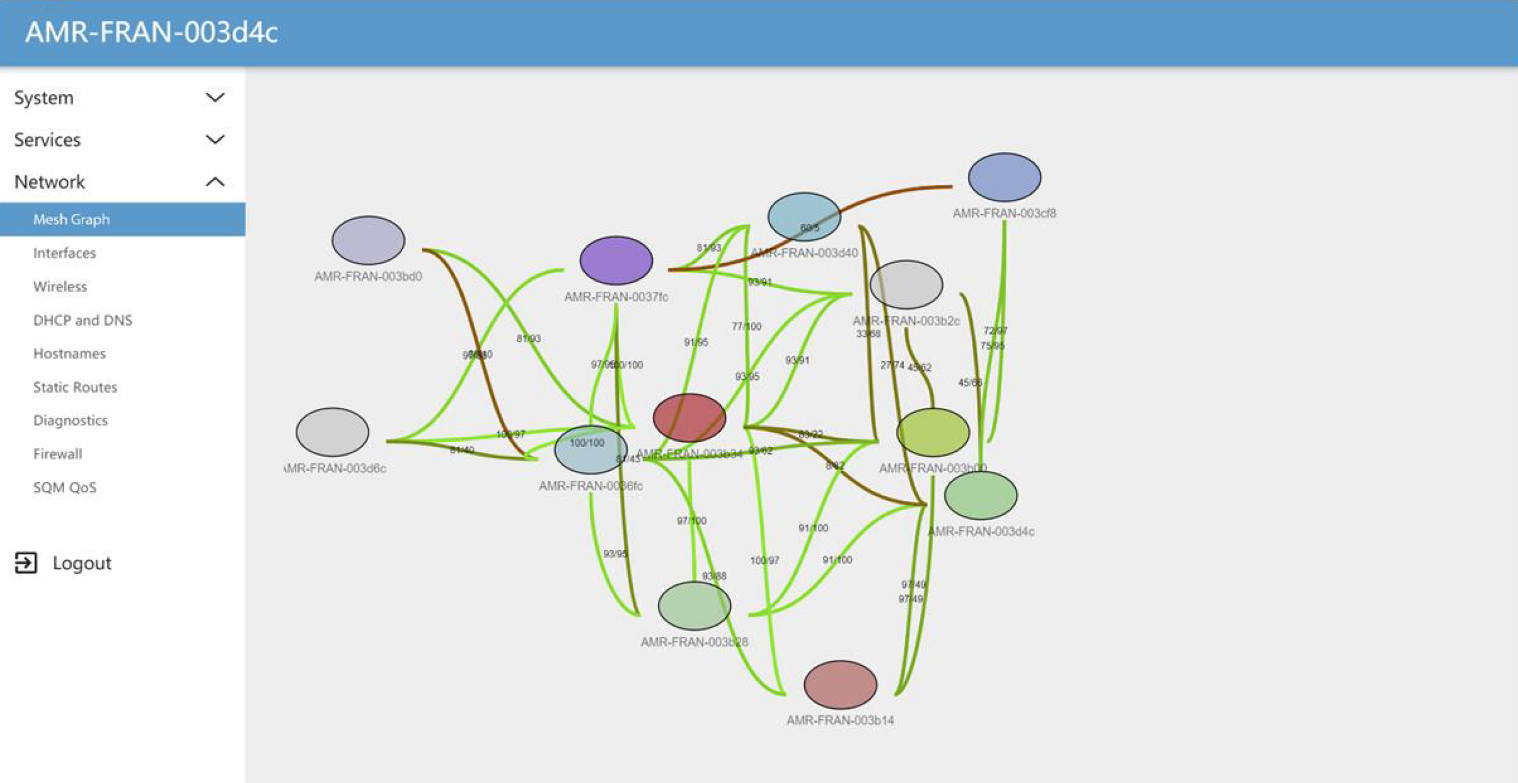
2nd Graph
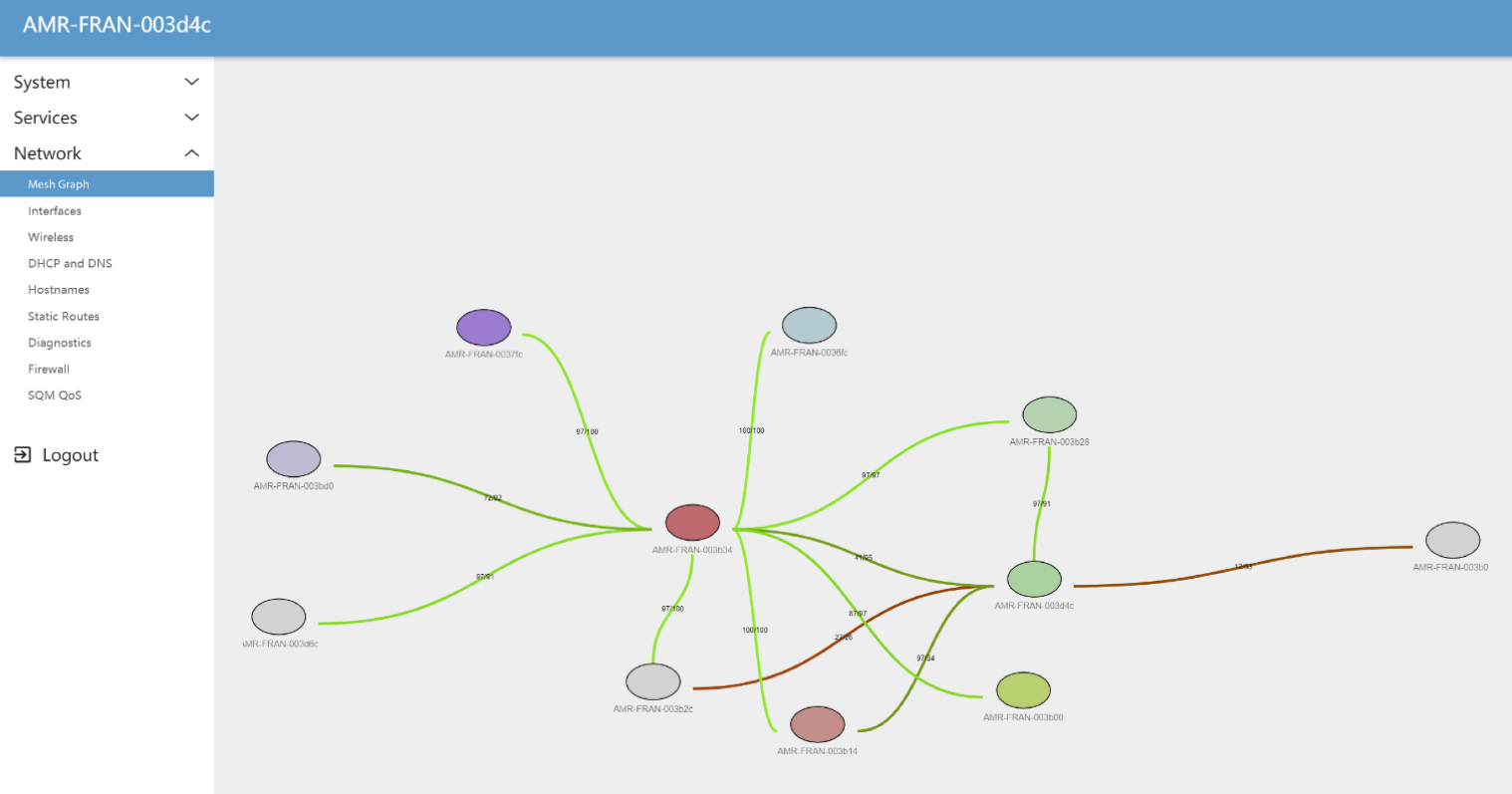
3rd Graph

4th Graph

5th Graph

Backhaul Test
ARRA’s mesh routers automatically seek and switch to the best path of internet available. This allows the network to grow without management. Resource allocation is automatic. When a better backhaul path appears, the routers dynamically switch to the superior source as long as it continues to be the best option. In order to demonstrate this flexible-backhaul behavior, an isolated group of routers was set apart from the rest and given their own source of backhaul via a wireless MiFi device.
Node G 3BA8 was connected to the MiFi backhaul and enjoyed connectivity. Node 3BB8 and Node 3D24 meshed to Node G 3BA8 and shared that internet connection as well. Next, a nearby Node (F 3B0C) was enabled. Node G 3BA8 then connected to Node F 3B0C and used its backhaul as the network protocol determined its connection was better than the cell backhaul.
